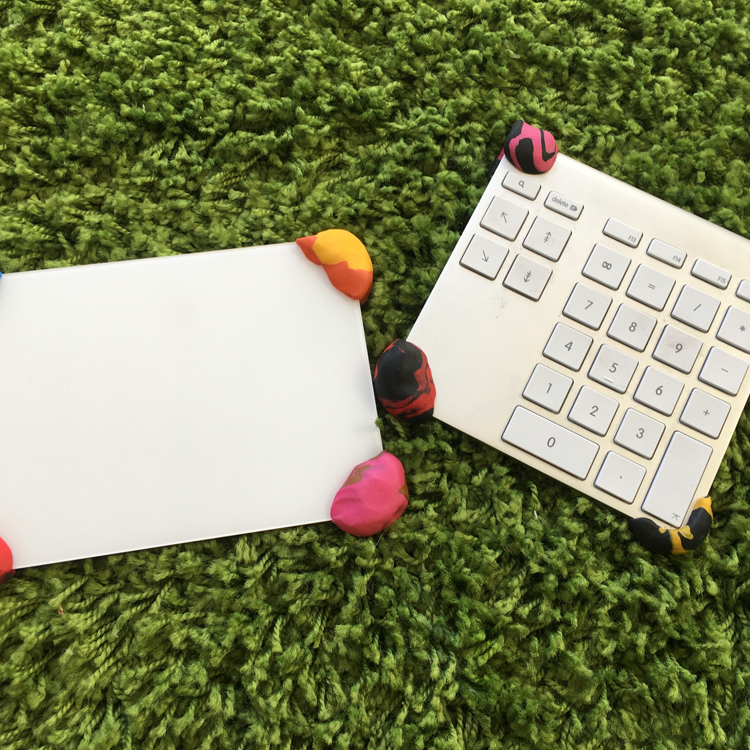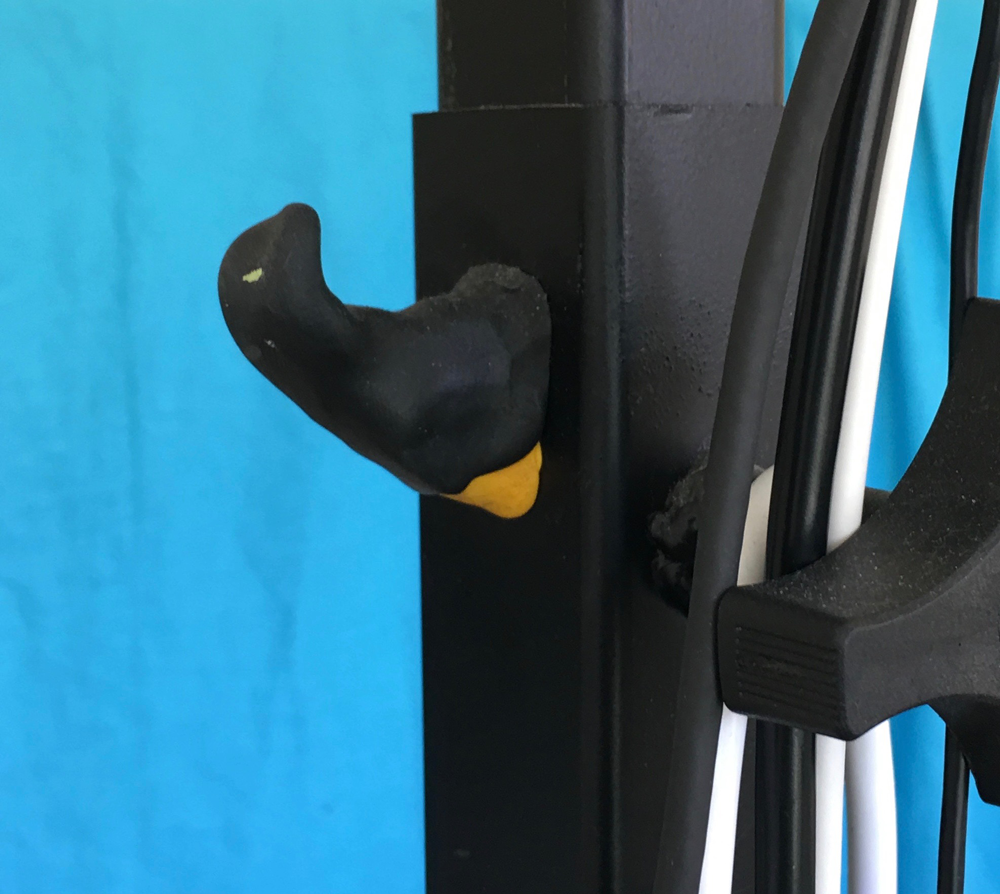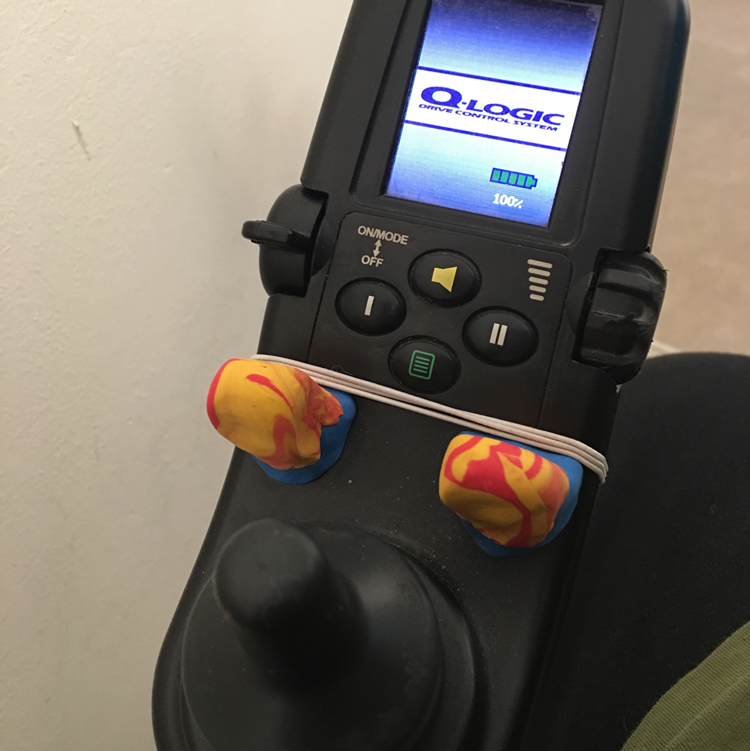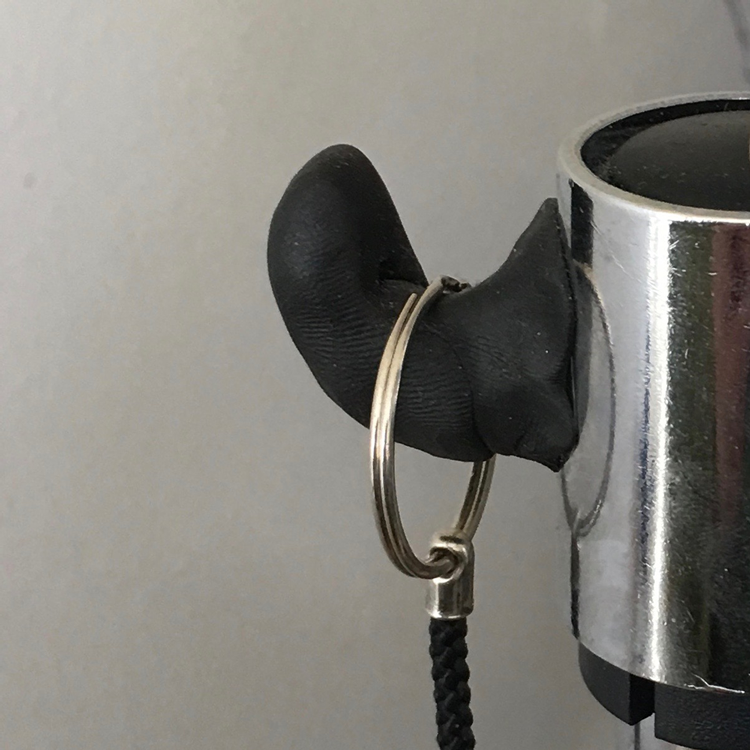
TOP 5 TIPS TO GET THE MOST OUT OF YOUR HOME WHEN YOU CAN’T LEAVE IT
Ricky Buchanan is a writer, an assistive technology expert, a cat lover and creative who lives her life at home. She’s put a lot of thought and effort into creating a home that supports her wellbeing, enhances her control over her environment and connects her to the world. Ricky points out that accessibility needs for people like herself who are bedridden are often overlooked when discussing accessibility. That is why she got in touch with Opening Homes to share her top tips for creating a home environment to thrive in.
TIP # 1: PRIORITISE AMBIENCE
Everyone wants a home that feels good to be in, but when you spend 24 hours a day 7 days a week in your home, it is even more vital. I've worked hard to create an environment that supports my mental health and wellbeing. I like my home to be bright, colourful and cheerful, while also feeling calm. Here are some things I've put in place simply because they bring me joy:
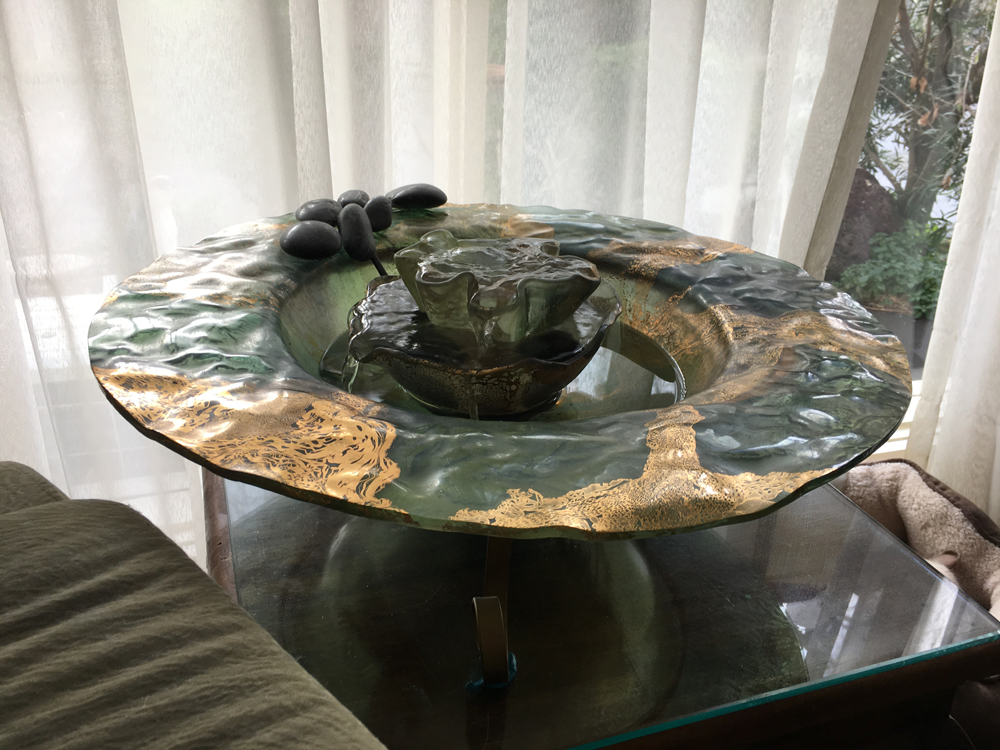
A string of rainbow coloured LED lights hang above my window. They turn on at sunset, creating a warm, happy environment. I have a garden outside my window that I make sure is cultivated. I also get my support staff to feed the birds every day outside my window so that I can watch the birds from my bed. This connection with nature is very important to me.
** On my wish list is a wide sliding glass door that opens to a large flat deck that my bed could be wheeled out on. I would love the deck to be partially covered, so I could get outside in all weather conditions.**
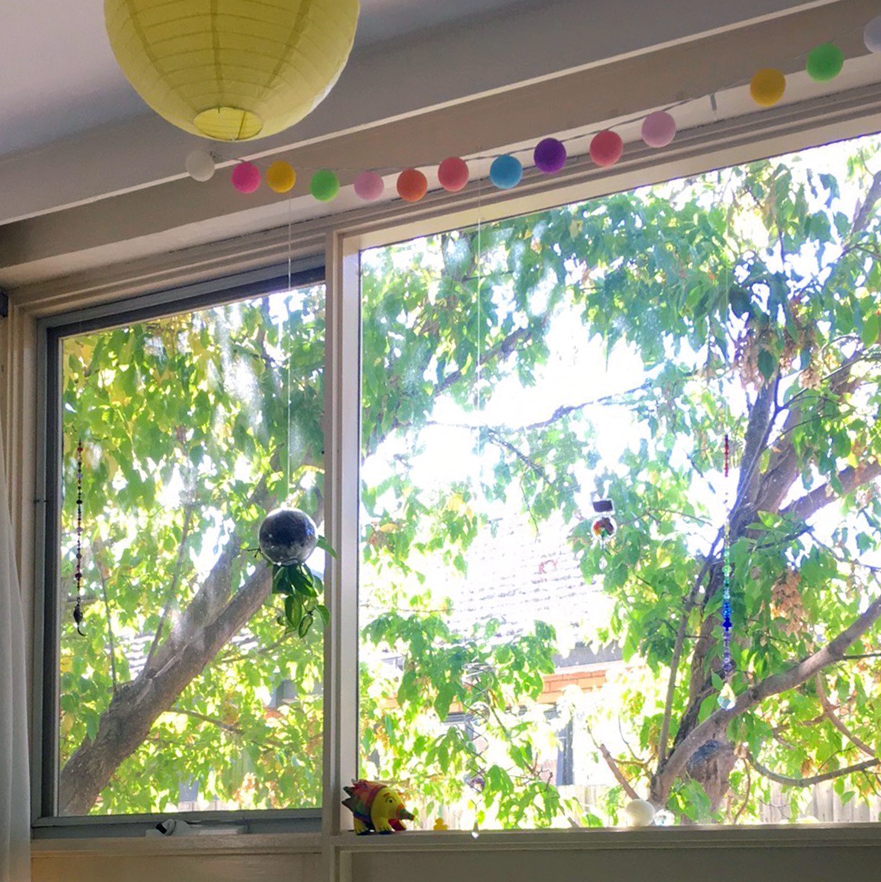
TIP # 2. FIT MORE THINGS AROUND YOU
When you are bedridden, things outside of arm's reach might as well be on Mars. Keeping things close can really enlarge your world. Here are my strategies for cramming as many things around me as possible.
- I have lightweight trolleys that I can move beside the bed.
- I use Sugru to make hooks so I have things hanging on my bed head, on the trolleys and everywhere I can reach. I'll explain Surgu more in my next tip.
- I hang wire baskets full of my things on the corners of the bed head.
- I have a long handled reacher that I use to retrieve things that fall on the floor. But, for my most vital items, such as the track pad I use to operate my computer, I keep a spare one near me. If one falls, I use the spare and continue doing my thing.


Tip # 3 If you Can't Find What You Need, Create It
- Use Sugru.
I mentioned in the last tip that I use Sugru to create hooks. I also use it to create bumpers to protect things that get dropped. The makers describe Surgru as a "mouldable glue" and it does indeed stick to pretty much anything, so be careful where you place it while it is drying! It is super easy to use. Just cut the packet open and knead it for a minute and then mould it into the shape you want. You can see from the photographs I am not too picky about making it look fancy, but if you prefer a more polished look, just dip your fingers in soapy water first. Then it won't stick to your fingers so you can smooth it out neatly.
- Use 3D PRINTING
I've found 3D printing to be so useful for creating things that need to be custom made or just don't exist. I taught myself to create designs with the free Fusion360 software. My favourite thing I've designed is my four-cup holder that is mounted to a miniature lazy-susan. I keep it on a trolley beside my bed. It makes it very easy to move the cup I want, so it is always within easy reach. There is nothing like this on the market, so 3D printing is the only way I would have been able to get it.
I used 3DHubs.com to find a local person with a 3D printer who was willing to print things for me. It is still a fairly costly exercise, but it has definitely been worth it.

- Design your own assistive Technology.
I could not find any computer stand that would hold my computer over my bed the way I needed it, but I did have a clear idea of what I needed. I used the free Fusion360 software to create the designs. I then hired a local welder who was able to create the stand for me, using my designs as a guide. It did take two iterations to get it just right, but it's exactly what I wanted now and so it was well worth the time and money it took to get it right.
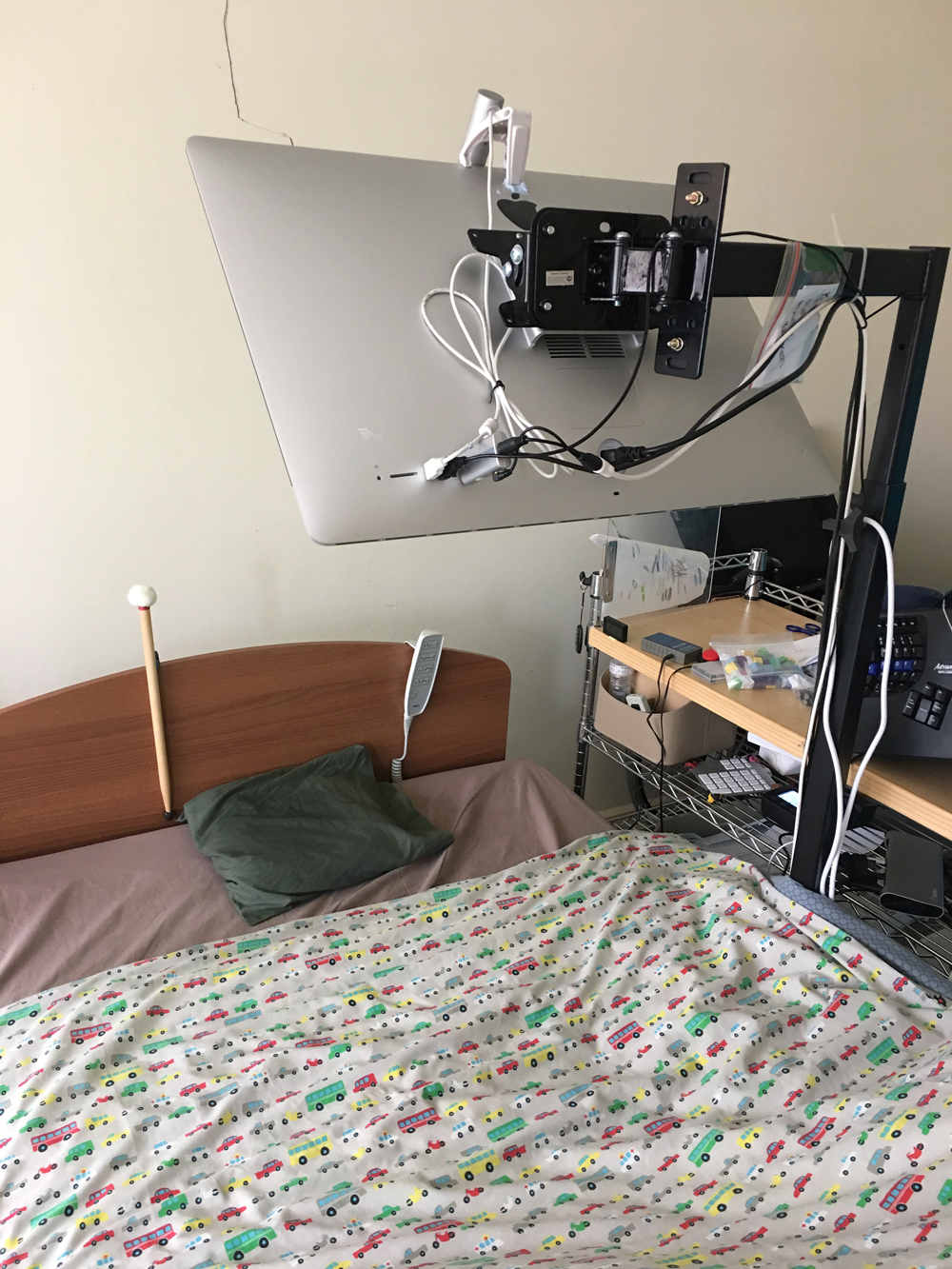
Tip # 4 Utilise Technology To Give You Power
I use a lot of home automation technology to control my home. I'm an Apple user. I have a Mac computer and an iphone, so that influences my tech choices. For people who prefer Android and Windows, there are also similar setups that can be accomplished.
My home automation technology includes:
- Phillips Hue globes in my living room, bedroom and connecting hallway that I can turn on and off using Siri voice commands.
- I also have a Phillips Tap switch on the wall so my support workers can control the same lights with the wall switch without interfering with my setup.
- I Use Belkin Wemo switches that allow me to turn power points on and off with Siri. I use these with my CPAP machine and humidifier, as well as the fountain in the living room and the gorgeous rainbow LED lights above my windows.
- I use a Broadlink RM Mini device that lets me control my air conditioner via Siri too. It acts as a universal remote control.
- The Belkin switches and the infra-red Broadlink won't communicate directly with Siri's voice commands, so I run a program called Homebridge on my Mac computer to force them to all talk to each other. This is pretty technical to set up, so if you're not a geek you might need a geek friend or an assistive tech specialist to help, but once it's up and running, it will do its thing completely automatically.
- I also have a wifi IP camera that feeds video and audio back to my Mac computer. I use it to look out the window at my garden and the birds. It is also useful when my support workers get stuck. They can take the camera to wherever they are and I can see what they are seeing and hear what they are saying.
- I also have a button which unlocks the front door to enable me to let my support workers and others into the house, but that's 15 years old now so it's not hooked into any of my other smart technology. Perhaps one day it'll be upgraded, but it does the job for now.
**On my wish list for the future is automated curtains and windows that I can control with Siri.**

TIP # 5 MIX THINGS UP
When you are homebound and bedridden, there is very little newness or change, so being able to mix up what I can see and sense has been integral to my well-being.
I am able to transfer between beds, and so I have a waterbed in my bedroom as my night bed and I have a hospital style bed in my living room as my day bed. It has been great to have two totally different environments to be in. Having two beds also helps with pain control, as the mattresses flex differently, and so I use different muscles.
If you don't have the option of having two beds, you can lay with your head at the foot of the bed sometimes to mix up your view. You can also create change in your room. This can be as complicated as getting people to paint the walls, or as simple as getting someone to put fresh flowers in your line of sight.
I am very happy with the accessibility and set up of my home, but I'm also a "fiddler" who is never quite finished improving things. I'm constantly researching the latest in assistive technology. It is exciting times as this field is developing faster than anyone can keep up with. Right now I'm looking forward to the Apple HomePod which will be released soon. It will make it easier to issue spoken commands to Siri even when I'm not beside my phone. I'm also looking forward to automating more things with smart home technology. It is a huge love of mine because it gives so much power. So, if I had a sixth tip, it would be to keep informed about what exists and what is coming in the field of assistive technology.
I don't think I'll ever consider the accessibility of my home "finished" because there will always be more that can be done, but I'm really enjoying the journey.
If you want to get in touch with Ricky, you can contact her via email at ricky@notdoneliving.net
Ricky's latest project was to design a beautiful set of unique self care cards for people who are chronically ill and in pain. You can learn more about them or purchase them online at http://energysavingselfcare.com/
Ricky also created a website with a mission to showcase how assistive technology can empower Apple users with disabilities http://atmac.org/
You can also find more out about Ricky at http://notdoneliving.net/
